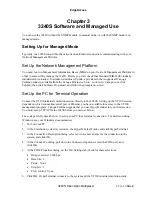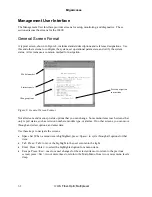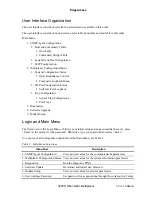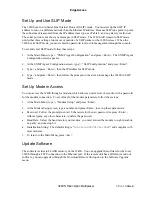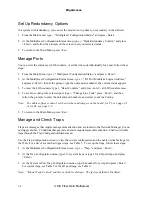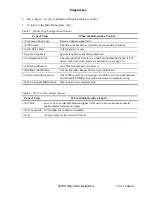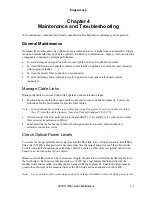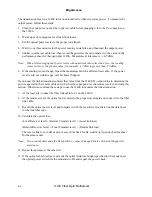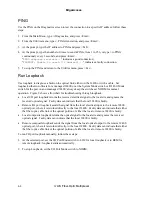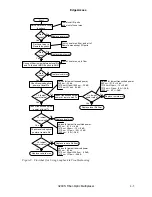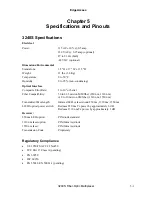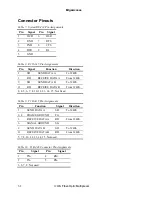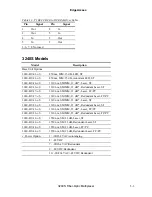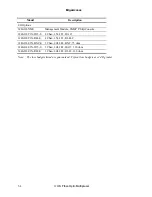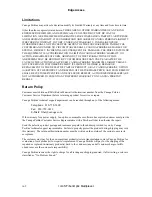
EdgeAccess
Troubleshooting
If data is not passing between the local equipment and the equipment at the remote site, make these
checks:
•
Verify that all cable connections are secure and that each data path is correctly connected with
optical cables connected Tx to Rx, and Rx to Tx.
•
If the LOS or AIS LED (optical connection) is on, but the Tx or Rx LED (copper connection) is
on, clean the optical cables and connectors, then check the optical power levels and calculate the
link loss; follow the steps on page 4-1.
•
If the optical cable loss figure exceeds the optical link loss budget specified for the modem,
set the optical power switch for the modem(s) to HI and repeat the power check.
•
If the actual cable loss still exceeds the loss budget for the modem, replace the cable and
connectors or contact Canoga Perkins to replace a low-power modem with a high-power
modem.
•
Send known data from the local equipment to the 3240S or connect a BERT tester and set it up to
meet the circuit and interface specifications for data rate and mode. Be sure to use the existing
fiber optic cables.
•
Follow the steps to run loopback either manually or in software (see page 4-4).
•
If the data fails to pass composite loopback, check the jumper and switch settings on the
interface and back panel on the local and the remote 3240S.
•
If the jumper and switch settings are correct and the data still fails to pass composite
loopback, replace the cable.
•
If the data fails to pass I/O port loopback, replace the 3240S.
•
If the data passes loopback, but the ALM LED remains On, contact Canoga Perkins
Technical Support.
If the failure does not occur on all ports, run the loopback tests, but set the loopback switch on the
failing port(s) to either LOC or REM to isolate the fault to the fiber cable or the I/O card.
If a failure occurs in a redundant system, it follows this sequence:
•
If the Primary link fails, the receiver switches to the Secondary link, activates the Fault Relay and
turns on the Backup, SEC, and ALM LEDs. The SNMP module on the transmitter activates the
Fault Relay and turns on the ALM LED.
•
If the Secondary link fails, the receiver unit turns on the Backup and ALM LEDs and the
transmitter turns on the ALM LED. The LEDs remain on until the fault is corrected.
•
If both links fail, the unit switches between the links every 2 seconds until one link becomes
usable. The SEC LED blinks and the Backup and ALM LEDs turn on.
Correct the problem, then to clear the Fault Relay, set the Redundant Optics switch to PRI, and then
to AUTO, or, in the management software, reach the System Configuration/Status menu and set the
operating mode to Primary, and then to Auto.
3240S Fiber-Optic Multiplexer
4-3
Summary of Contents for 3240S
Page 1: ...Model 3240S SNMP Managed T1 E1 Fiber Optic Multiplexer User Manual...
Page 2: ......
Page 4: ......
Page 6: ......
Page 12: ......
Page 20: ...EdgeAccess 2 8 3240S Fiber Optic Multiplexer...
Page 30: ......
Page 31: ......
Page 32: ......
Page 46: ......
Page 47: ......
Page 48: ......
Page 49: ......

